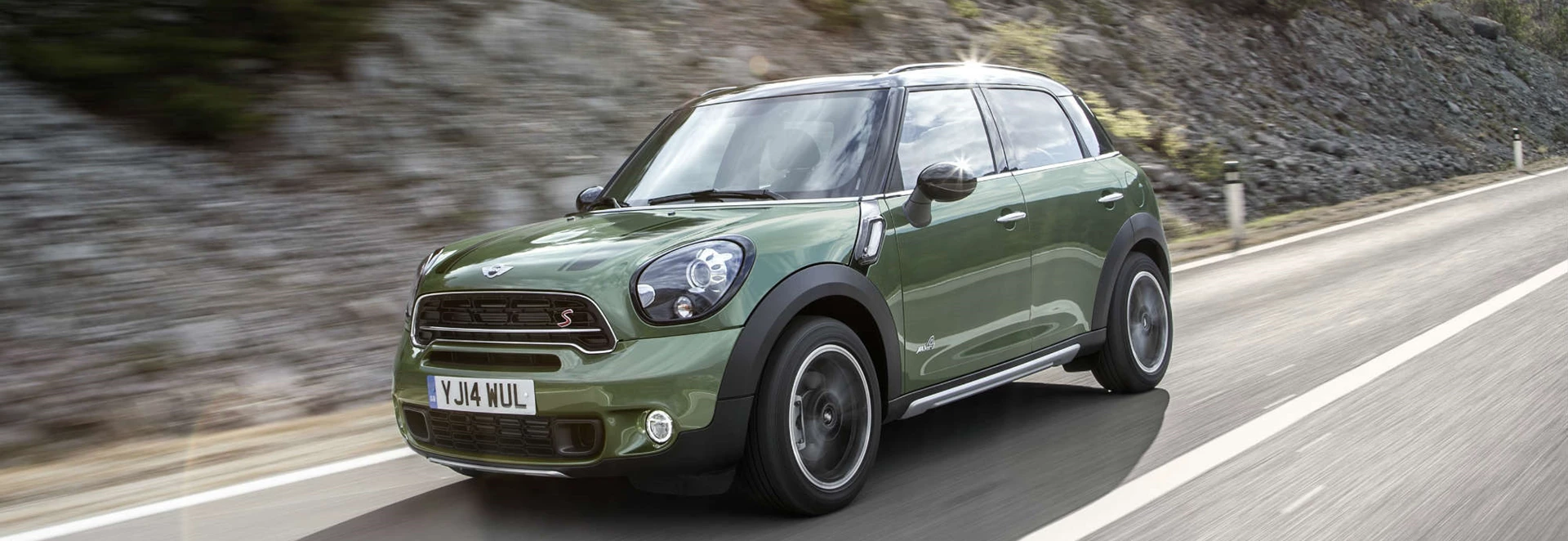Designed on the back of a paper napkin by Alec Issigonis in 1959, the original Mini – first marketed under the Austin brand as the Austin Seven – was a marvel of packaging, performance and engineering.
Apart from perhaps the Beetle there is no car as instantly recognisable as the Mini, or one as illustrative of the Swinging Sixties, the decade in which it was popularised.
A true British icon, it would go on to be the car which proved that a small, front-wheel drive car could do the job of larger, more powerful cars better than they could, both on the street and on the rally stages.
Nearly six decades later, MINI is funnelling that heritage into the Seven Edition, a retro-tastic new special edition trim which aims to showcase the distinctive elements first pioneered by the original Mini and which lies at the root of the MINI brand today.
MINI introduced the Countryman in 2010 in an effort to hold on to customers whose lifestyles meant that the hatchbacks they had previously bought were no longer suitable. It's the largest car of the range, and has far more space for luggage and rear passengers. There are, however, those who believe that the design features common to all MINIs do not work well in a car of this size.
Power outputs vary wildly, from 89bhp for the One D diesel to 215bhp for the John Cooper Works. That car comes as standard with the ALL4 four-wheel drive system, which is also available as an optional extra on every other version with Cooper in its name. Six-speed manual gearbox is the norm, but most cars can also be specified with an automatic gearbox.
Performance
As the power outputs suggest, there's a considerable variation in straight-line performance across the range. The 97bhp One automatic takes 13.9 seconds to accelerate from 0-62mph, while the John Cooper Works manual requires just 6.9 seconds to do the same job. Other than the JCW, only the Cooper S and Cooper SD (the latter being the most powerful diesel in the line-up) can do it in under ten.
The One auto also has the lowest top speed of 104mph. The JCW can hit 140mph if fitted with the manual gearbox, or 139mph in automatic form.
Ride and Handling
Strange though it may seem to some people, slow versions are more fun to drive than quick ones for this reason.
Since the introduction of the brand under BMW ownership in 2001, there has always been an emphasis on how good MINIs are to drive. Very sharp turn-in and nimble handling have been features of nearly all MINIs of the modern era. The Countryman, being taller and heavier than all the others, can't match them dynamically, but in some cases it comes close. Less powerful models are still pretty good to drive despite the inevitable extra body lean. When the output exceeds 120bhp, the engine provides more than the chassis can cope with, and balance is lost. Strange though it may seem to some people, slow versions are more fun to drive than quick ones for this reason. ALL4 versions have extra underbody protection which, along with the considerable ride height of every Countryman, make them the MINIs most suitable for off-road driving.
Interior and Equipment
The MINI Countryman has a motor sport background. A works team competed in the World Rally Championship in 2011 and 2012, and radically modified versions have won the Dakar Rally four years in a row.
Luggage capacity ranges from 350 litres with the rear seats in place to 1,170 litres to roof level with the seats folded down. In absolute terms these are only moderate figures (the Citroen C3 Picasso, for example, is much roomier despite being slightly shorter) but they're better than you'll find in any other MINI. Only the Paceman, the Countryman's slightly sportier sister, comes close. There's plenty of room in the back for people under six feet in height. Taller folk might not want to sit there for too long, but at least they can try. In most other MINIs it's barely worth the effort unless very small people are sitting up front. Standard equipment includes air conditioning, DAB digital radio, Bluetooth connectivity, an auxiliary socket and rear parking sensors. For all trims except the One, LED fog lights also feature. Following modern MINI tradition, there is an enormous range of extra-cost options, such as bi-xenon headlights, a panoramic glass sunroof, satellite navigation, cruise control and a removable tow bar.
Cost
The entry-level petrol-run One costs just over £17,000, and one model, the John Cooper Works automatic, is just on the high side of £30,000.
Like all MINIs, the Countryman is a premium product and is priced accordingly. The entry-level petrol-run One costs just over £17,000, and one model, the John Cooper Works automatic, is just on the high side of £30,000. Buyers are traditionally unable to resist choosing optional extras and can end up paying thousands more. The 89bhp One D and 110bhp Cooper D share the same fuel economy and CO2 figures of 67.3mpg and 111g/km. The much more powerful 141bhp Cooper SD isn't far behind on 62.8mpg and 119g/km. All of them therefore are subject to a modest £30 of Vehicle Excise Duty from year two onwards. None of the petrol models do better than 50mpg on the EU test. The John Cooper Works automatic is furthest away from it with 37.7mpg, and has an official CO2 rating of 175g/km.
Our Verdict
Unless you really want a MINI in your life, it's difficult to recommend the Countryman ahead of some of the cheaper alternatives on the current market. It isn't as roomy as other crossovers, it's underwhelming to drive by MINI standards, and its looks are always likely to split opinion. We reckon it's more suitable for people who really want to own a MINI but need more space than most cars from this brand can offer.




